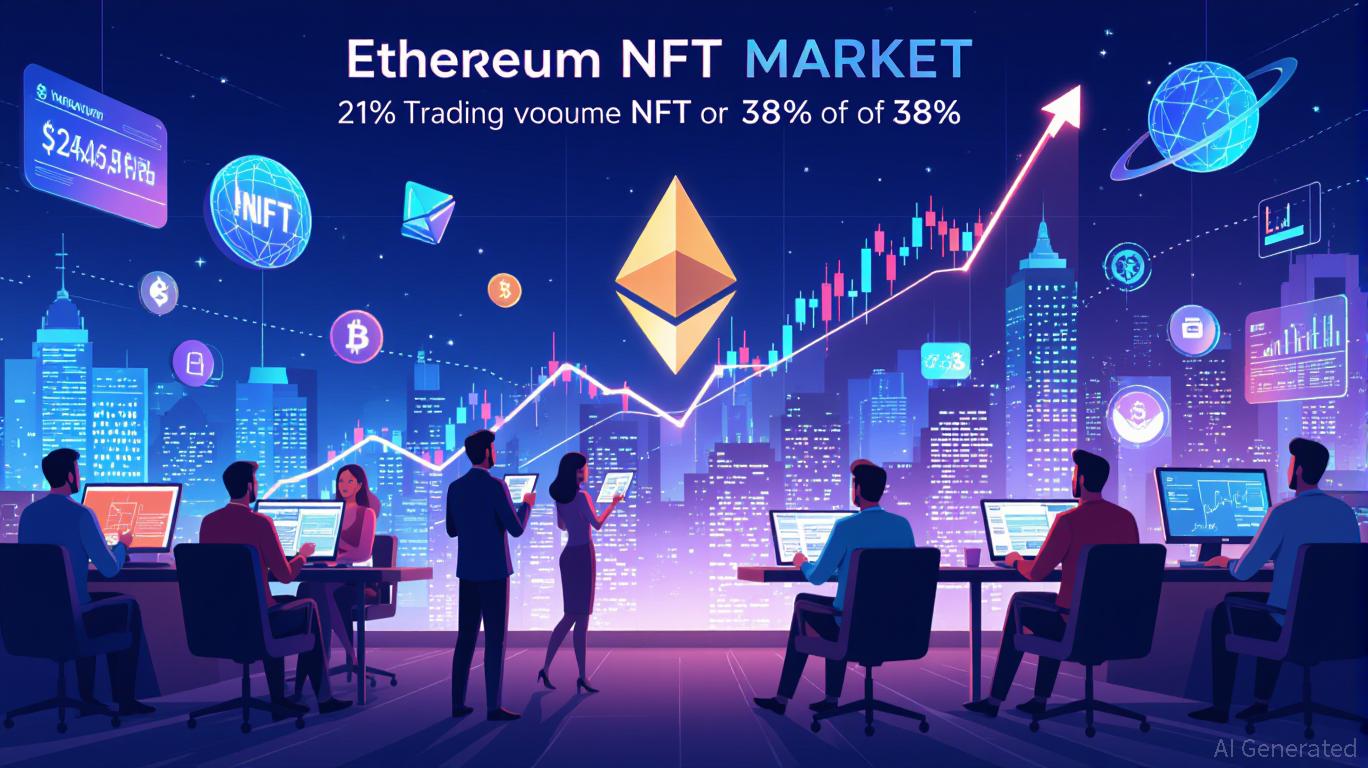The Ethereum-based gaming and sports NFT market is undergoing a transformative phase, driven by macroeconomic shifts, technological innovation, and evolving consumer behavior. While the broader NFT sector faced volatility in 2025—marked by a 57% decline in GameFi market cap—sports and gaming NFTs have shown resilience, accounting for 38% of global NFT transactions and generating $5.8 billion in trading volume in Q1 2025 alone [1][5]. This growth is underpinned by platforms like Football.fun, which are redefining how fans interact with sports through blockchain-driven engagement models.
The Ethereum NFT Ecosystem: A Foundation for Innovation
Ethereum remains the backbone of the NFT market, powering 62% of all transactions in Q2 2025 [5]. The Pectra upgrade’s 53% reduction in gas fees has democratized access to NFT trading, enabling platforms to experiment with microtransactions and high-frequency trading [5]. Layer 2 solutions like Base have further amplified this trend, with $47.67 million in 30-day NFT trading volume and a 70% YoY increase [2]. These developments create fertile ground for sports NFTs, where real-world performance metrics can be tokenized and traded in real time.
Football.fun: A Case Study in Sports NFT Innovation
Football.fun, a blockchain-based fantasy football platform built on Base, exemplifies the potential of Ethereum’s sports NFT ecosystem. Within two weeks of its launch, the platform achieved a $100 million Total Value Locked (TVL), driven by its unique model of fractionalizing real-world footballer shares and linking rewards to on-field performance [2][4]. Users trade these shares using USDC deposits, earning Tournament Points (TP) that convert to Gold—a stablecoin pegged 1:1 to USDC—used for in-game transactions [1].
The platform’s tokenomics are designed to balance speculation and utility. A “jeet jail” mechanism penalizes high-frequency trading by limiting immediate re-trading, while a 5% trading fee funds liquidity pools, ensuring ecosystem sustainability [1]. Additionally, the Motty system gradually releases new player shares to avoid inflation, maintaining scarcity and demand [3]. Football.fun’s success is further bolstered by institutional backing, including a $2 million seed round from 6th Man Ventures, a firm with a track record in high-growth crypto projects [1].

Tokenomics and Competitive Advantages
Football.fun’s token model is part of a broader trend in DeFi-gaming, a sector projected to grow to $259 billion by 2032 [3]. Its dual-access model—free trial and professional edition—alongside viral community campaigns, has accelerated adoption. Over 10,738 active wallets and a peak trading volume of $15 million in a single day underscore its appeal [2]. The platform’s browser-based interface eliminates barriers to entry, aligning with Ethereum’s push for mass adoption.
However, Football.fun operates in a competitive landscape where regulatory uncertainty looms large. While blockchain offers transparency and fraud reduction, projects must navigate evolving legal frameworks. For instance, Arsenal’s fan tokens and NBA Top Shot NFTs have faced scrutiny over securities law compliance [4]. Football.fun’s focus on performance-linked assets, rather than speculative collectibles, may mitigate some risks, but long-term success will depend on regulatory clarity and user trust.
The Road Ahead: Challenges and Opportunities
Despite its rapid growth, Football.fun faces challenges. The Ethereum gaming NFT market’s 57% Q1 2025 market cap decline highlights macroeconomic vulnerabilities [3]. Additionally, the platform’s reliance on real-world sports data introduces operational risks, such as data integrity and player performance volatility.
Yet, the long-term outlook remains optimistic. The global gaming NFT market is projected to grow at a 24.8% CAGR, reaching $44.1 billion by 2034 [4]. Innovations like AI-driven procedural content generation and real-world asset (RWA) integration are poised to enhance user engagement and economic value [4]. For investors, Football.fun represents a compelling intersection of sports fandom, DeFi, and blockchain scalability.
Conclusion
Ethereum-based gaming and sports NFTs are no longer speculative experiments but foundational pillars of the digital economy. Platforms like Football.fun demonstrate how tokenomics, institutional backing, and user-centric design can drive adoption in a maturing market. While regulatory and macroeconomic risks persist, the sector’s growth trajectory—bolstered by Ethereum’s infrastructure and Layer 2 advancements—positions it as a high-potential investment opportunity. As the line between physical and digital sports economies blurs, early adopters stand to benefit from a paradigm shift that redefines fan engagement and financialization.
Source:
[1] Football.fun’s $100M TVL Surge – Crypto [https://www.ainvest.com/news/football-fun-100m-tvl-surge-paradigm-crypto-driven-fantasy-sports-defi-adoption-2508/]
[2] Football.Fun Surpasses $100 Million in TVL in Just Two Weeks [https://www.ainvest.com/news/football-fun-surpasses-100-million-tvl-weeks-launch-2508/]
[3] The DeFi-Driven Sports Betting Revolution: Why Football. … [https://www.ainvest.com/news/defi-driven-sports-betting-revolution-football-fun-base-redefining-web3-engagement-2508/]
[4] Gaming NFT Market Size & Share, Growth Forecasts 2025-… [https://www.gminsights.com/industry-analysis/gaming-nft-market]
